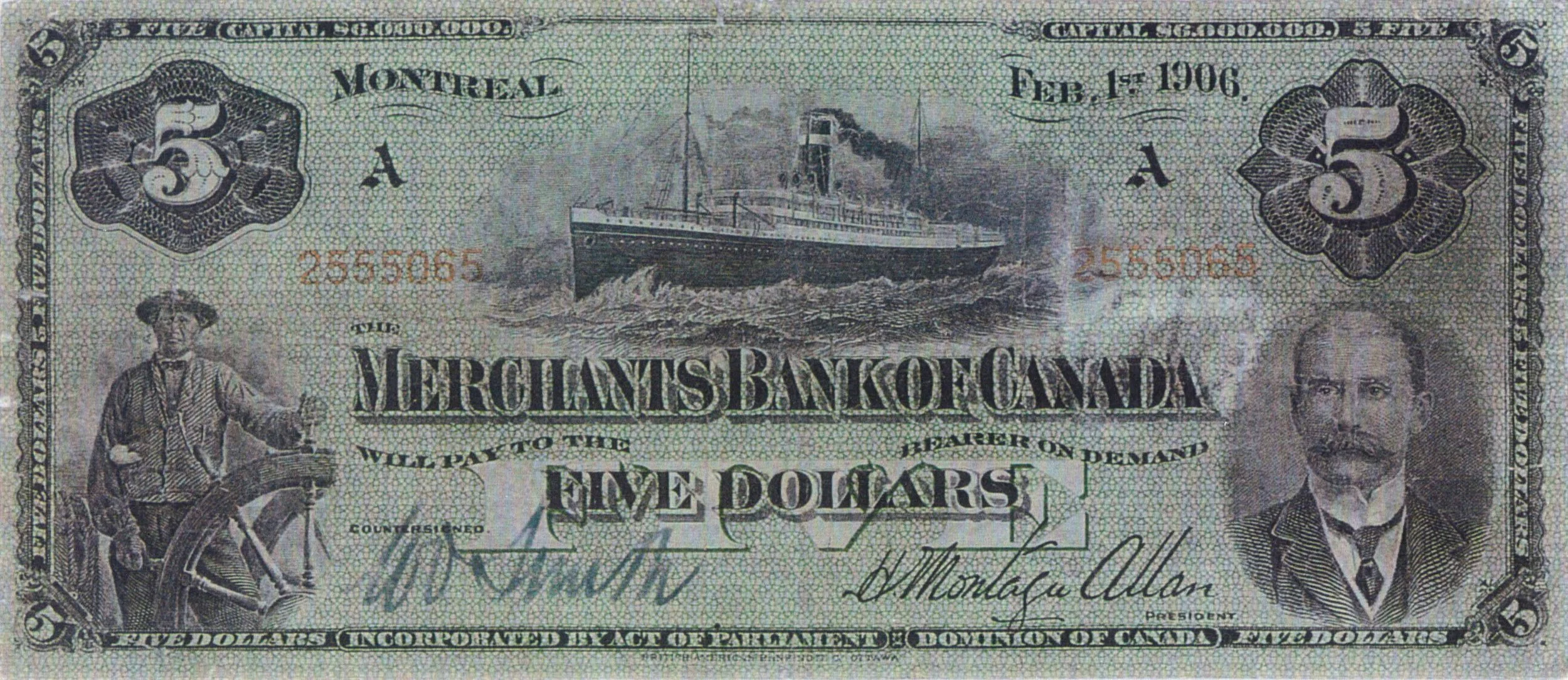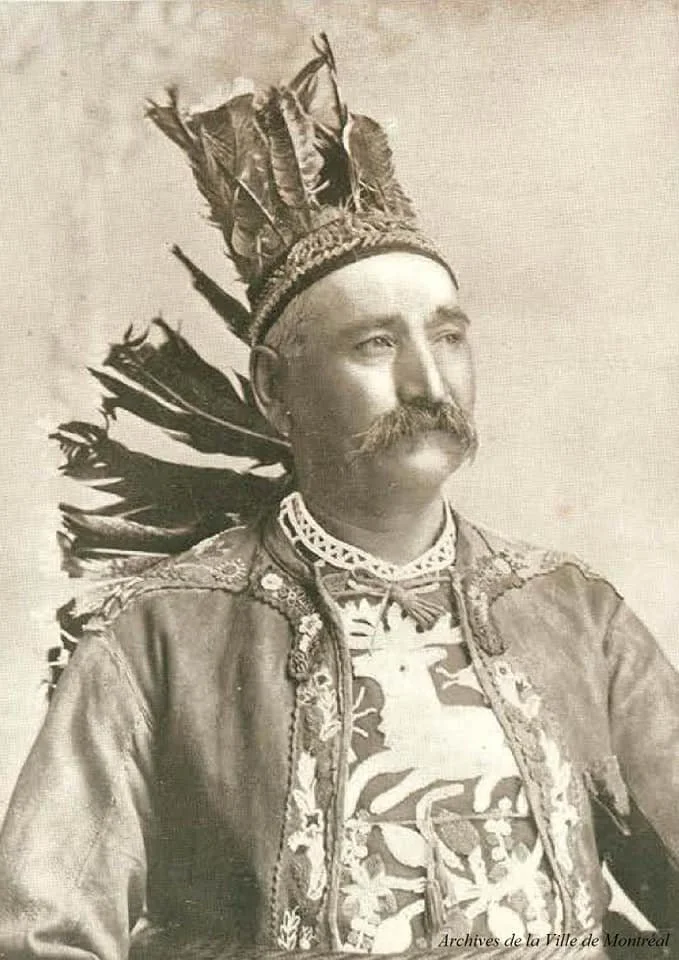Big John
Painting inspired by a photo of Big John Canadian (left) navigating the Lachine Rapids, done by Karoniaktajeh Louis Hall. (Courtesy: Só:se Raientonnis)
Story told by Só:se Raientonnis
My great grandfather was Big John Canadian. He was an enormous man for his time. He and another man, Big John Rice, were river pilots.
He used to navigate the Lachine rapids. He was one of the few, along with John Rice, who knew how to do that.
He would do it with those big voyageur canoes that they had. Oniarò:ta’ is what we call it in Mohawk, those kinds of boats. They were double ended and wide. They were quite long, about 36 feet. Fur trappers’ canoes.
They wouldn’t use wheels, they would use oars to steer those boats.
He knew how to steer that through those rocks. He learned where the dangerous rocks were. And to my knowledge, there was never an accident.
Most of his customers were all French so he picked up the French language. They’d pay him to take them on the river. He was like a boat captain.
That was his main livelihood at that time, along with that other fella. One of them is on a five dollar bill. It’s on display in Ottawa at the Bank of Canada Museum.
Canadian five dollar bill features Big John Rice (left) from 1906. He was also featured on the two dollar bill in 1877. (Courtesy: Kanien'keháka Onkwawén:na Raotitióhkwa Language and Cultural Centre)
Shawatiskó:wa
Big John Canadian (Courtesy: Kahsennakeniate Stacey)
Só:se raientonnis ROKÁ:RATON
Big John Canadian ronwá:iatskwe’ ne teiohsotsherá:ne rakhsotkénha. Rakowanèn:ne’ ne tho shontakahá:wi. Raónha tánon’ ó:ia’ rón:kwe, Big John Rice, kahonwé:ia’ thniniarotáhrhokskwe’.
Lachine tsi kahnawatátie’ nithaniarotáhrhokskwe’. Raónha tánon’ tohkára nihá:ti, John Rice ò:ni’, ratiweientehtòn:ne’ ne tho nahatí:iere’.
Thí:ken kahoniowá:nen’s èn:ratste’. Oniarò:ta’ nè:’e tewana’tónhkhwa’ ne Onkwehonwehnéha, tho nikahoniò:ten’s. Tetsarónhkwen nonkwá:ti kahonweià:ke iotsiweionto’thí:ie’ tánon’ tewatakà:ron. Kwah ken’ nikahonwé:son’s thí:ken, tóka’ 36 niwahsì:take tsi ní:iens. Ronterístaiens tánon’ konwatiié:nas ne ken’ nikario’tà:sa raotihonwé:ia’ ki’ nen’ nè:’e.
Iah okahkwèn:ta’ tháhontste’, aká:we’ énhontste’ aontahniniarotáhrhoke’ thí:ken oniarò:ta’.
Raweién:te’ aontahaniarotáhrhoke’ tsi nón: nieioneniake’tó:ton. Wahaweientéhta’ne’ ka’ nón:we nitioteneniátteron. Tánon tsi niió:re tsi wakaterièn:tare’, iah nowén:ton tha’teho’niohskèn:’en. Thó:ha akwé:kon tsi niiá:kon enhonwáhnha’ne’ rati’serón:ni nen’ nè:’e, ne káti wahà:ronke’ ne O’seronni’kéha. Enhonwakária’khse’ ia’tahshakoniatarí:ia’kte’. Rahonwakwe’ní:io tsi ní:ioht. Ne tho shontakahá:wi nè:’e ki’ ratonhnhisáktha’. Shaià:ta ne tehniiahse wisk nikahwístake ohwistà:ke raià:tare’. Bank of Canada tsi iontkahthótha’ ne Kanà:tso tká:ien’ ne ón:kwe aiontkáhtho’.
Edited by: Emma McLaughlin, Local Journalism Initiative Reporter
Translation by Katsenhaién:ton Lazare



